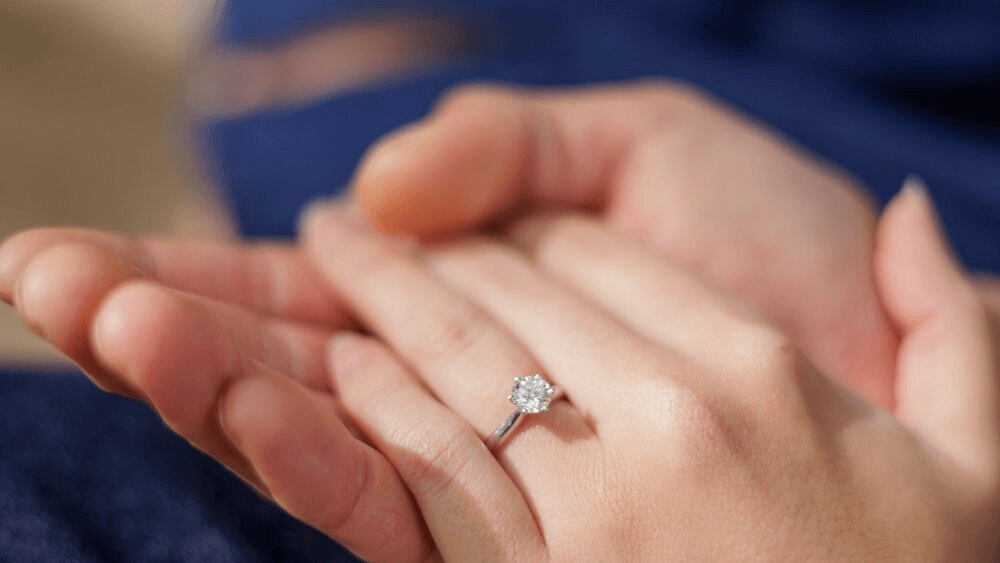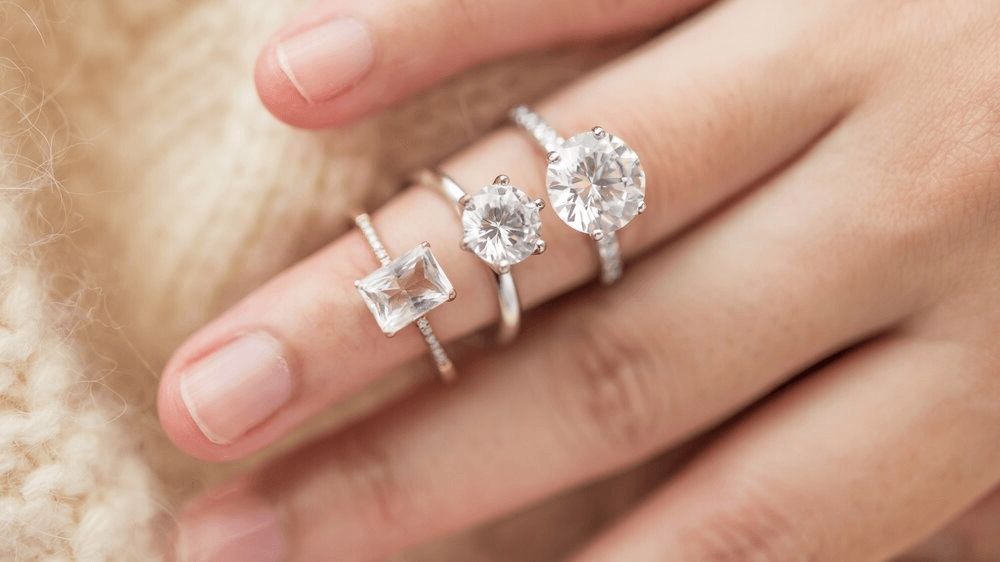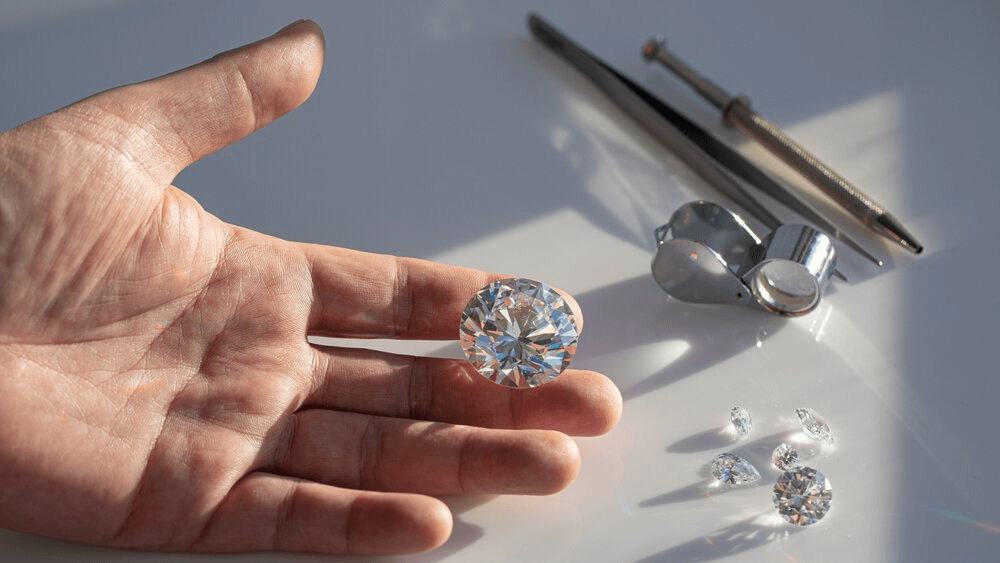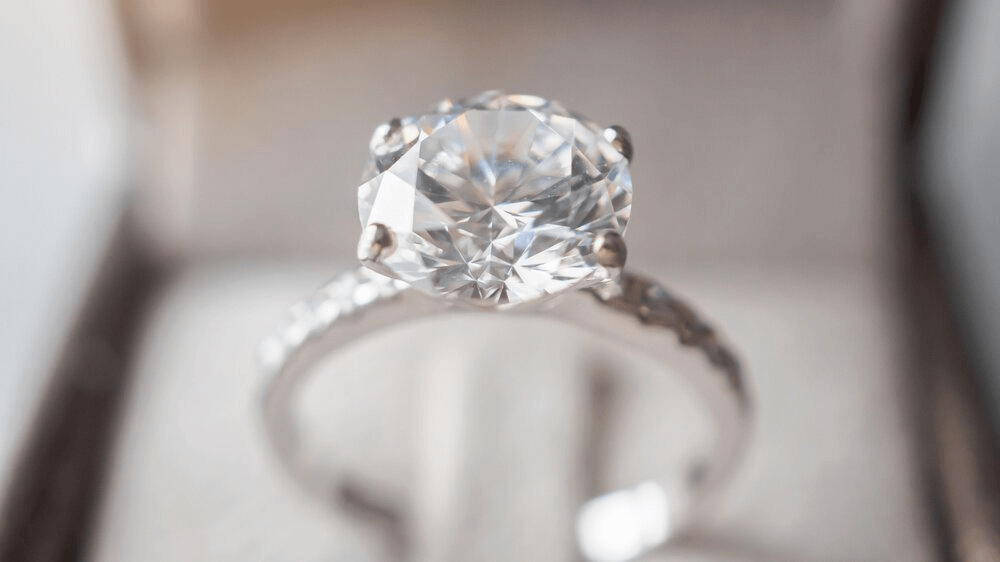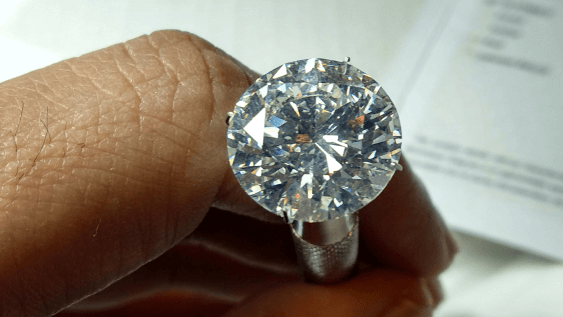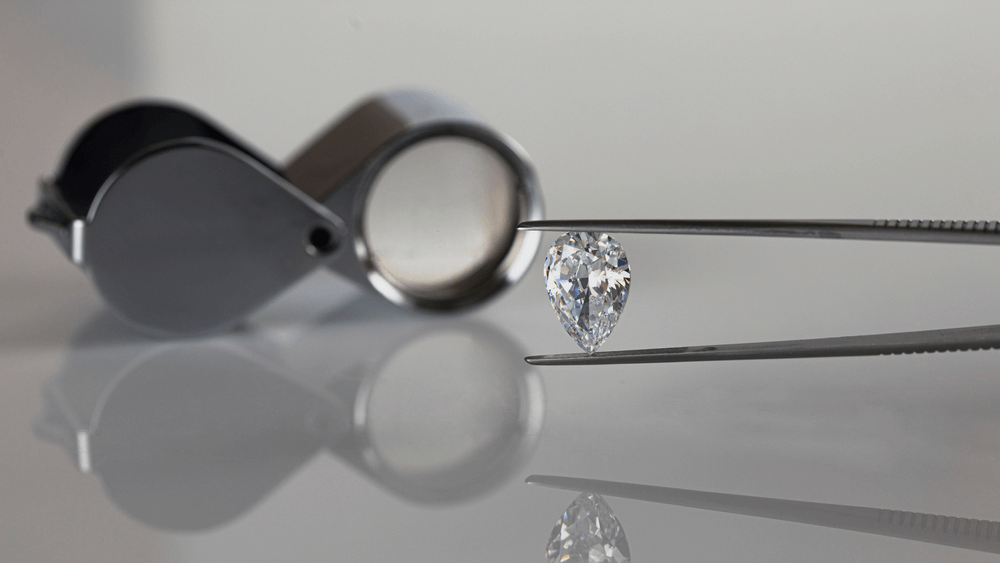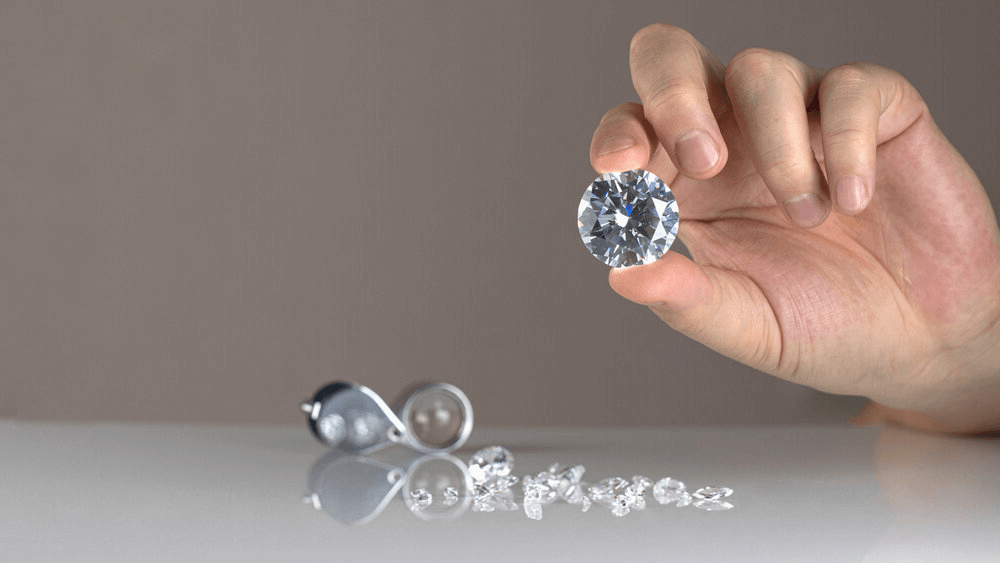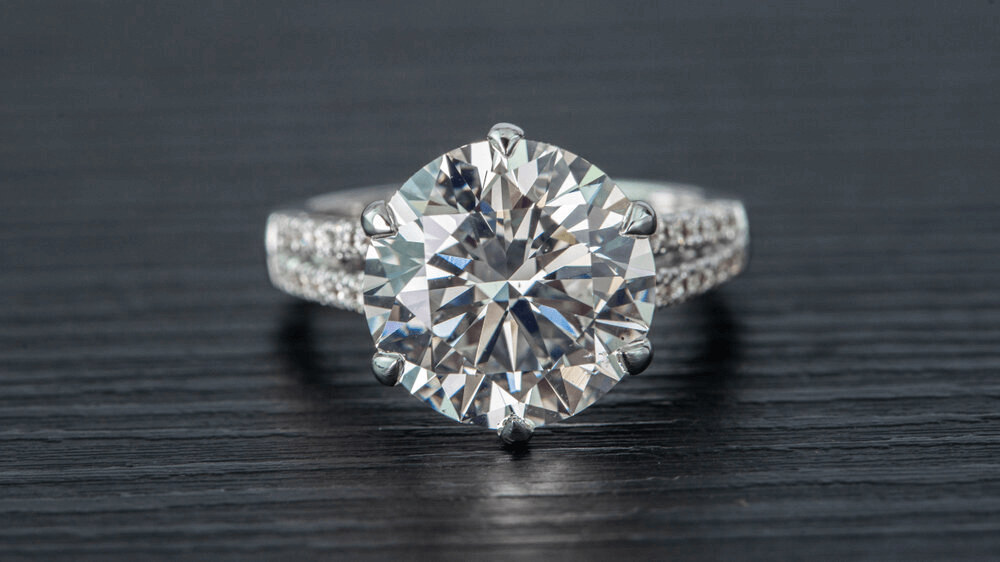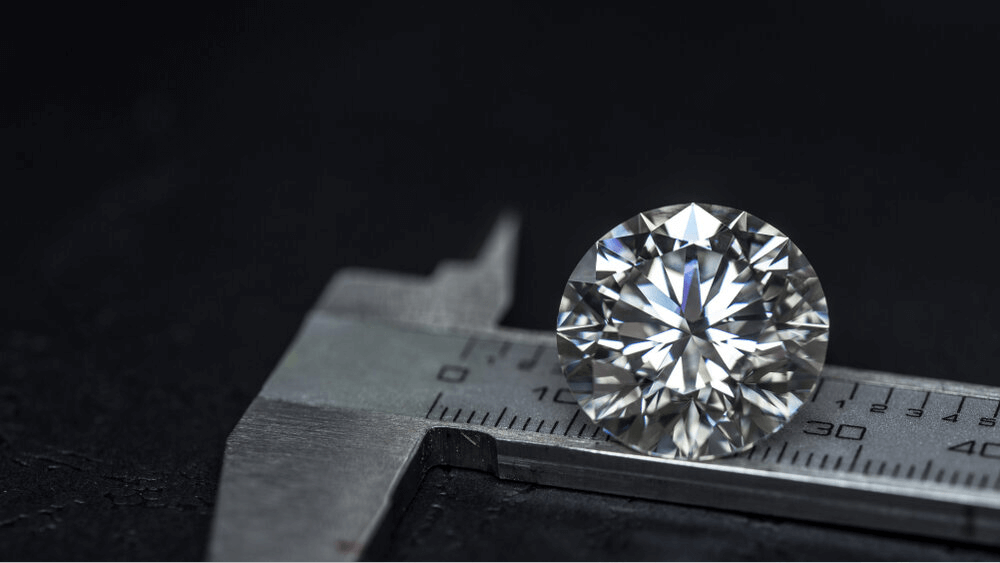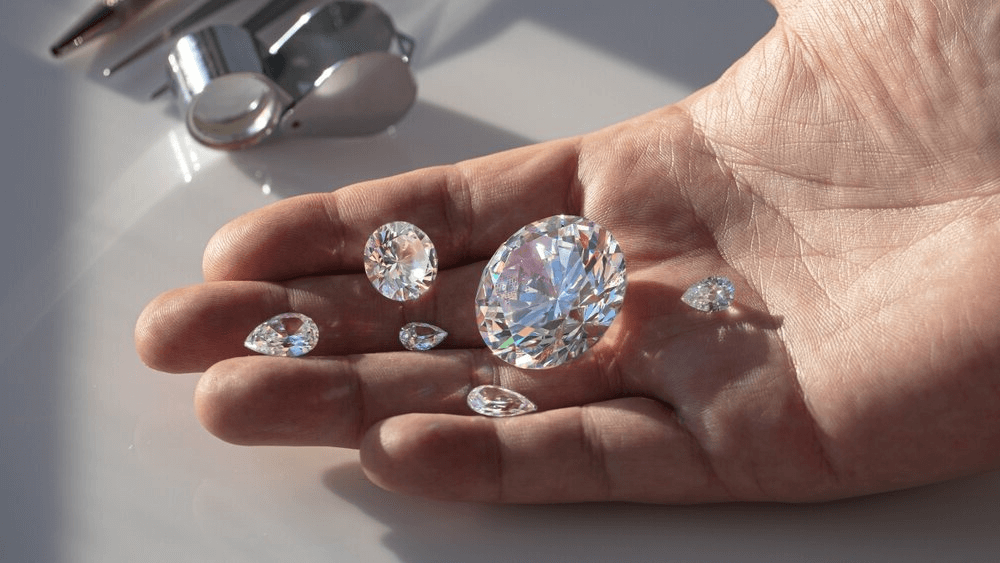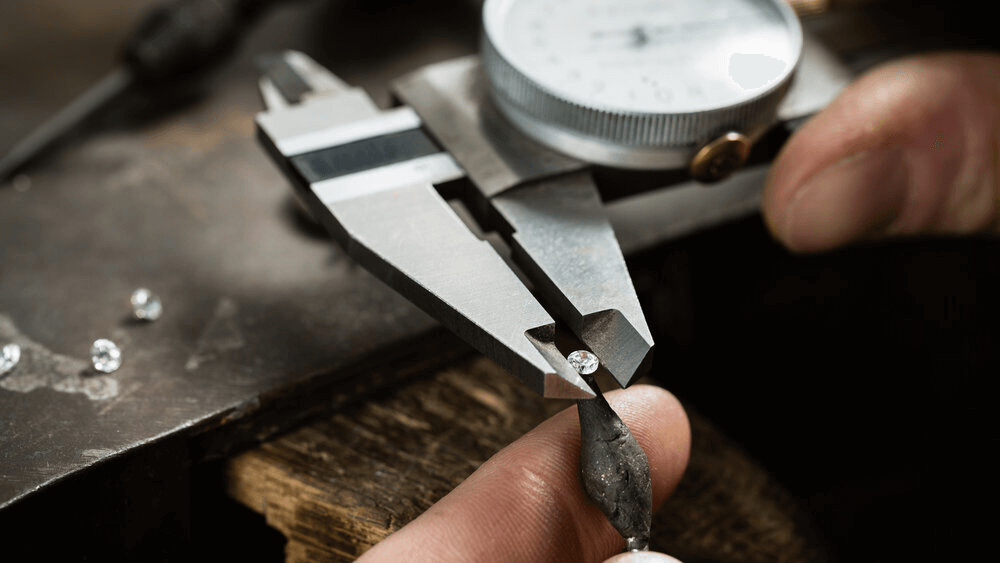Small Diamond Rings: Big Sparkle in a little Package

By Gary A.

Edited by Olivia H.
Published Mar 17, 2022
Edited on Mar 31, 2025
Elegance and style come together beautifully when you choose a design that highlights the unique charm of small diamond engagement rings, offering timeless appeal without overwhelming size.

Navigate this guide:
- 7 Quick Tips for Buying Small Diamond Engagement Rings
- Introduction to Small Diamond Engagement Rings
- Design Options for Small Diamond Rings
- Quality and Certification Essentials
- Our Expert Take
- 10 FAQs
Before we dive deeper into the specifics, here are some practical tips to help guide your decision-making process:
7 Quick Tips for Buying Small Diamond Engagement Rings
When selecting a small diamond engagement ring, it’s crucial to focus on specific aspects that ensure you’re getting the best value and beauty for your investment. Here are key tips to consider:
- Tip 1: Understanding Diamond Quality in Small Stones: Even small diamonds should exhibit high-quality characteristics. Pay attention to the 4 Cs – Cut, Clarity, Color, and Carat. For small diamonds, the cut is particularly crucial as it influences the sparkle and overall appearance of the stone. Ensure the diamond is well-cut to maximize brilliance.
- Tip 2: Examining the Setting and Craftsmanship: The setting of a small diamond can greatly enhance its appearance. Look for settings that secure the diamond well while amplifying its visibility and brilliance. Craftsmanship is key; a well-made ring will ensure the longevity and durability of the piece.
- Tip 3: Considering the Band Style and Metal: The band style and metal can complement a small diamond significantly. Thinner bands can make the diamond appear larger, while certain metals like platinum or white gold can enhance the stone’s brilliance. Choose a band that balances well with the size of the diamond.
- Tip 4: Checking for Symmetry and Proportions: Symmetry is vital in small diamonds as it impacts how light is reflected within the stone. Ensure that the diamond is proportionate and symmetrical. This can be verified through the diamond’s grading report.
- Tip 5: Assessing the Ring on Your Hand: It’s important to see how the ring looks on the hand it will be worn on. Smaller diamonds can look different depending on hand size and shape. Try on the ring, if possible, to ensure it suits the wearer’s style and hand.
- Tip 6: Understanding the Impact of Diamond Shape: Different shapes can influence the perceived size and brilliance of small diamonds. Shapes like oval, pear, or marquise can appear larger than round or square cuts. Choose a shape that maximizes the visual impact of the small diamond.
- Tip 7: Verifying Certification and Grading: Ensure that your small diamond comes with a certification from a reputable grading entity. This provides an unbiased assessment of the diamond’s quality and characteristics, giving you confidence in your purchase.
Now that you’ve got these practical tips, use Jeweler AI below to find the perfect engagement ring that suits your style and budget:
Introduction to Small Diamond Engagement Rings
Aside from the obvious, one of the biggest upshots to conducting your own research into diamonds and engagement ring design means that you can really start to appreciate the intricacies of the subject – rather than the big, bold, obvious points.
In other words, while the mammoth, 10-carat, celebrity-worthy diamonds may make the headlines, there are so many things to love about the more modest engagement rings of the world. It’s not size or weight that makes a diamond beautiful; it’s a combination of shape, fire, brilliance, scintillation, arrangement, and sentimental value that does the trick.
For that reason alone, many, many shoppers – whether they’re on tight budgets or not – feel compelled toward small diamond engagement rings. While the national average may sit around 1 carat, plenty of people find themselves leaning toward diamonds that are way short of that milestone weight – and for good reason.
Here is everything you need to know about small diamond engagement rings.
Small Diamond Engagement Rings
The Appeal of Small Diamonds
There are no ‘official’ definitions for big or small engagement rings, but we’d argue that a ‘small diamond’ for an engagement ring is anything at 0.75 carats or below.
A lot of jewelers tend to state that a minimum of 0.3 carats is required for the center setting. Any smaller, and the diamond may start to look a little lost – and may be too small for anyone to really appreciate its unique characteristics.
0.3 – 0.75 carats is a great range. It caters to a lot of different budgets and senses of style but, whether you shop from the low or high end of the range, will always achieve that dainty engagement ring look smaller diamonds are valued for.
There’s no exact definition of ‘dainty’ when it comes to engagement rings, but generally, we’d expect these rings to feature a particularly small diamond and very delicate metalwork.
Dainty engagement rings tend to favor smaller diamonds, and settings that contribute to the intricacy and detail of the ring without overwhelming the center stone with metalwork and additional stones.
A 0.3 carat Round Brilliant diamond will be a little over 4.3 mm in diameter, while a 0.75 carat diamond of the same cut and proportions will be around 5.75 mm. As always, some shapes will look a little bigger than others at these carat weights – for instance, the length of the Oval makes it appear larger than the Round Brilliant – but, if you’re sold on the ‘small engagement ring’ vibe, that probably won’t impact your decision much.
Why Size Isn’t Everything
Small diamond rings make a statement all of their own by defying ‘convention’, and proving that a whole lot of beauty, romance, and commitment can be contained within a relatively small package.
Obviously, how you and your partner feel about smaller diamond rings needs to play a key role in determining whether or not they’re for you. If your partner has their heart set on a larger engagement ring, then a particularly small diamond could be less than ideal for your proposal. If you’re worried that you’re going to feel a pang of buyer’s remorse every time you look down at your partner’s finger, then you’ll want to seriously rethink your decision before committing.
If, on the other hand, you really do feel a decisive pull toward dainty engagement rings, you should banish the idea that ‘small = less’ from your head.
Design Options for Small Diamond Rings
There’s a lot of diversity that can be found in small diamond rings. Take cluster rings, for instance. While, in the past, they have been frequently associated with cheaper retailers who want to undercut traditional jewelers on price – and, obviously, need to create those savings somewhere – modern reinterpretations of the traditional cluster are a compelling argument in favor of the industry ‘eating its words’ over this setting style.
Rather than the traditionally regular, circular pattern, cluster engagement rings can feature irregular and unique shapes. They can comprise three or four small diamonds, rather than many, many rows of melee diamonds, and combine diamonds with other elements like pearl and emerald, ruby, or sapphire.
These clusters can resemble florals, starbursts, or even planets spanning the arch of the finger. Sure, the name ‘cluster ring’ hasn’t got the best reputation – but that’s definitely changing now.
The great thing about clusters is that they can be economical but, now more than ever, they don’t have to look cheap.
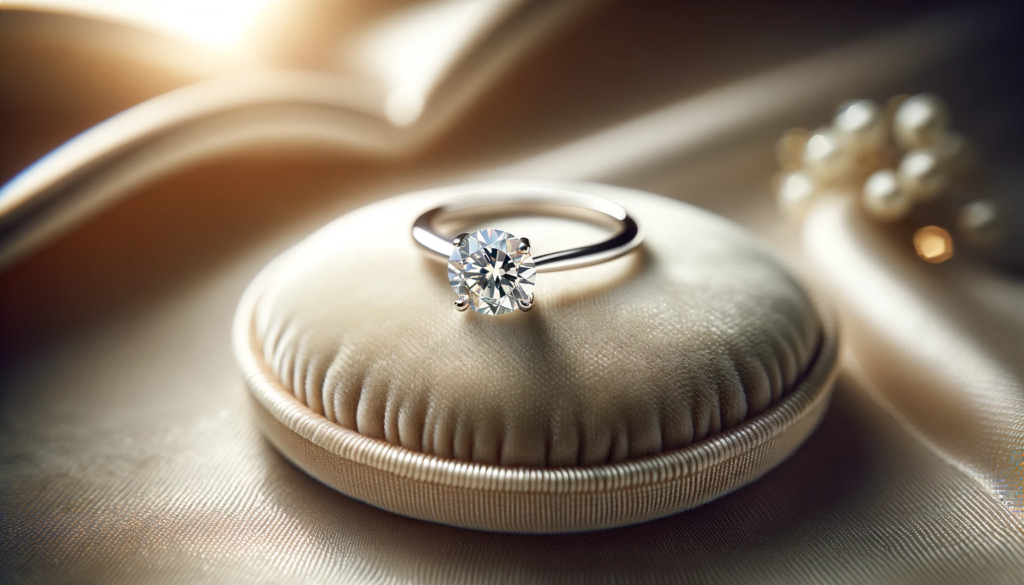
Three Stone Small Diamond Engagement Rings
The three stone engagement ring setting is nowhere near as influential as the solitaire or halo, but it’s seen a surge in popularity – particularly after Prince Harry proposed to Meghan Markle with a Cushion flanked by two Round Brilliant diamonds back in 2017.
The three-stone setting is representative of the past, present, and future. More practically, if you’re worried about losing a little sparkle with a smaller diamond, it’s a great choice for tripling that brilliance and fire.
The setting looks great with a combination of diamond shapes, although most shoppers prefer to go uniform or, at the very least, stay symmetrical like Harry and Meghan. It’s generally preferable to go for two smaller diamonds on either side of the center stone, even if your diamonds are already on the smaller side, to begin with.
The Solitaire
Who said you had to get creative about styling a smaller diamond? As we mentioned above, smaller diamonds make a big statement all of their own, simply because they do something different to your usual, expected 1 carat stones.
Some shoppers – even those who love the look of a small diamond – are a little shy about the solitaire, since the absence of any decorative features or accents means that there’s no hiding a small stone.
The thing is, you don’t need to hide a smaller diamond. A solitaire that defies conventions is bound to grab people’s attention and, of course, look beautiful simply because of its fresh, unique look.
Still worried? Make the ring’s minimalistic design look intentional. Combine a Marquise with a sleek, modern bezel, or mount your Emerald cut horizontally (known in the trade as East-West) rather than vertically, or explore your options for more unique prong setting types like the tulip. There are a surprising number of creative options open to you, even in something as traditional as the solitaire.
Floating Diamond Engagement Rings
One thing that will inevitably make any diamond look a little smaller? Hefty metalwork keeping it in place. Sure, four prongs aren’t going to take much weight off a 5 carat stone but, when you’re looking to set a 0.4 carat diamond, even those tiny prongs can start to encroach on it.
There are a lot of different ways to create a floating engagement ring, but all of them are united by the fact that they minimize interference, and leave the diamond to do the talking.
This is a great option for anyone who wants to maximize the volume they do have at their disposal, rather than worrying about what their diamond is lacking. Consider an open bezel – one that creates the illusion of a diamond hovering in place, almost entirely free from metalwork.
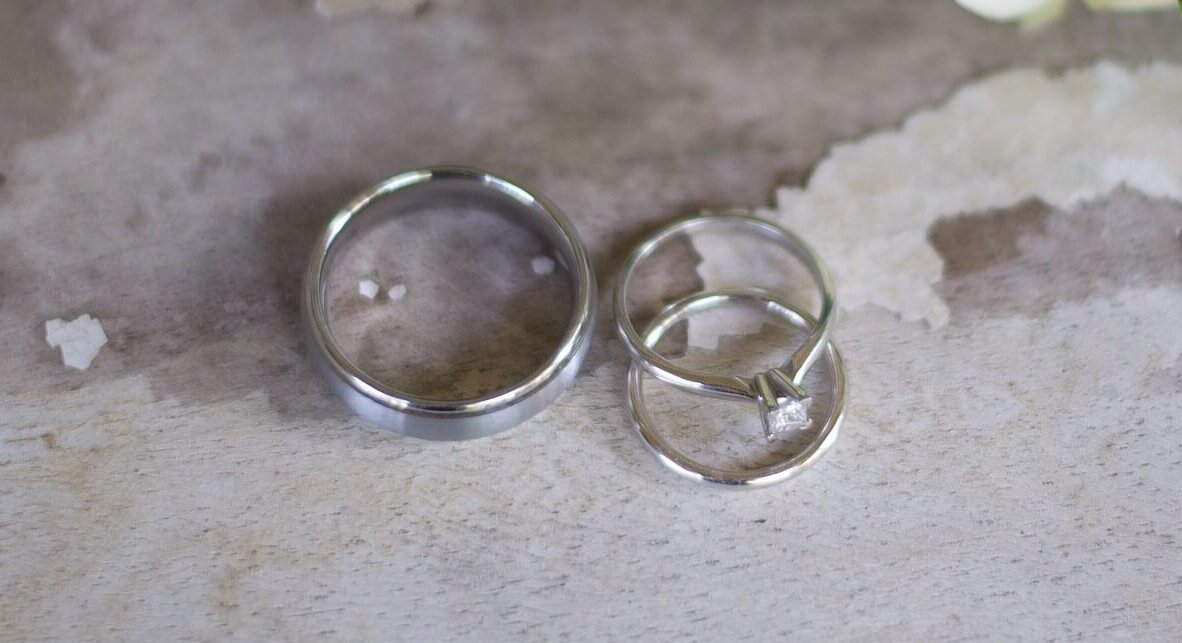
Quality and Certification Essentials
Whether you’re buying a large or small center stone for your ring, you must make sure it is accompanied by a full report from a reputable lab – either the GIA or the AGS.
Melee diamonds, or the very tiny diamonds used in pavé or halo settings, aren’t typically accompanied by individual GIA certificates. Instead, they are sorted by color and clarity and sold in lots to jewelers. This is perfectly okay, and not something to worry about – provided, of course, that you’ve chosen a reputable and skilled jeweler.
Don’t make the mistake, however, of thinking that this is okay for your center stone (or stones). Even a diamond as small as 0.3 carats needs to be properly graded and accompanied by a valid report for you to even consider investing in it.
If you’re buying a small diamond engagement ring, then the exact same rules that apply to shoppers in the 1 carat, 2 carat, or 10 carat range must apply to you. Eye cleanliness, no visible color (something that gets easier in smaller diamonds, where traces of color are more easily obscured), an Excellent or Very Good grade for Cut, Symmetry, and Polish, and a diamond that falls within the right proportions for its cut, are all paramount to making a good purchase.
Price and Affordability Insights
How much they will cost depends on carat weight, diamond quality, and shape but, for diamonds that fall between 0.3 and 0.75 carats, you can expect to spend between $1,500 and $4,000 on the stone.
Diamonds that fall short of the 1 carat mark are significantly more affordable since so many shoppers are reluctant to dip below that threshold. This is a major benefit if you feel drawn to smaller diamond rings since it’s a far more budget-friendly option.
Keep in mind, however, that there is still a major difference in value between sub-1 carat diamonds. Even a single carat weight will feature diamonds at a variety of price points, all of which are determined by the quality of the stones. We look at this in more detail in our guide to 0.5 carat diamond price – a handy read if your heart is set on a small diamond engagement ring.
Budget-Friendly Options Without Compromise
Small diamond engagement rings are a great choice if you’re on a limited budget, but that’s not to say that, as an option, they’re ‘second best’. It will always be the case that the big, jaw-dropping stones worn by celebrities and VIPs will make the headlines, but your ring doesn’t need to achieve that in order for it to mean the world to the person who receives it. Keep in mind that, even if you’re investing in a small diamond engagement ring, the checklist for diamond quality still needs to be the same.
Even a smaller diamond, which will prove ‘better’ at obscuring slight inclusions or color than larger diamonds of the same quality, needs to be eye clean, free from color, and cut to a very high standard, or you’ll be wasting your money.
Our Expert Take
There’s so much to love about smaller diamond engagement rings. True, they’re not exactly what the ‘average shopper’ is looking for, but that’s no reason to turn your back on the huge creative potential these stones have for creating romantic and unique rings. It’s totally possible for the right jeweler to bring out the full beauty of a diamond, even if you have to look a little close to see the smaller details.
10 FAQs
- Q: What is considered a small diamond for an engagement ring?
- A: A small diamond typically refers to a stone that is 0.75 carats or below. However, the perception of size can also depend on the ring’s design and the diamond’s cut and shape.
- Q: Can small diamonds in engagement rings still be high quality?
- A: Absolutely. Small diamonds can possess the same high-quality characteristics as larger stones. Key factors include the cut, color, clarity, and carat weight, which determine the stone’s overall quality.
- Q: How can I make a small diamond engagement ring look bigger?
- A: Choose a setting that enhances the stone’s visibility, like a halo setting. Opt for a slender band to make the diamond appear larger and consider elongated shapes like oval or marquise.
- Q: Are small diamond engagement rings more affordable?
- A: Generally, yes. Smaller diamonds are typically more affordable than larger ones, making them a budget-friendly option without compromising on elegance and style.
- Q: Does the metal of the band affect the appearance of a small diamond?
- A: Yes, the metal color can impact the diamond’s appearance. White gold or platinum can enhance the stone’s brilliance, while rose or yellow gold can add warmth to the overall look.
- Q: Is certification important for small diamond engagement rings?
- A: Yes, certification is important regardless of the diamond’s size. It ensures that the diamond has been evaluated and graded by a professional lab, confirming its quality and authenticity.
- Q: How do I choose the right shape for a small diamond?
- A: Consider shapes that maximize the stone’s visible area and offer more surface sparkle. Oval, pear, and marquise shapes can appear larger than round or princess cuts.
- Q: Can small diamonds in engagement rings be upgraded later?
- A: Yes, many jewelers offer upgrade programs where you can trade in your small diamond for a larger one later, typically for the difference in cost.
- Q: How should I care for my small diamond engagement ring?
- A: Regular cleaning and maintenance are key. Use a soft brush with mild soap and water to clean the ring. Also, have it checked periodically by a professional for any loose settings.
- Q: Are small diamond rings suitable for everyday wear?
- A: Yes, small diamond rings are perfect for everyday wear due to their practicality and durability, especially when set in a secure setting and crafted with quality materials.
Find your perfect small diamond engagement ring with Jeweler AI – Where elegance meets personalization.
Here are more specific diamond prices topics to browse:
- Melee Diamonds: The Perfect Accents to Enhance the Center Stone
- 0.25 Carat Diamond: Tiny Treasure or Just Too Small?
- The True Value of a 0.5 Carat Diamond Ring Revealed
- 0.7, 0.8, 0.9 Carat Diamond Showdown: Which One Wins?
- Price Alert: Don’t Overpay for a 1 Carat Diamond Ring!
- What You Should Pay for a 1.5 Carat Diamond Ring?
- Price Alert: How Much Should You Pay for a 2 Carat Diamond Ring?
- How Much Does a 2.5 Carat Diamond Really Cost?
- The Real Cost of a 3 Carat Diamond Ring
- Industry Secret: How Much Does a 4-Carat Diamond Ring Actually Cost?
- How Much is Too Much? The True Cost of 5 Carat Diamond Ring!
- 6 Carat Diamond Rings: Pricing Breakdown & Value Tips
- 7 Carat Diamond Rings: Affordable Luxury Prices Revealed
- 8 Carat Diamond Rings: Price Comparison & Savings Tips
- 9 Carat Diamond Rings: Detailed Pricing Guide & Best Deals
- 10-13 Carat Diamonds: The Ultimate Symbol of Luxury!
- 15 Carat Diamonds: Why Celebrities Love Them!
- Unveiling the Majesty: The Secrets Behind the 20 Carat Diamond Ring!
- Decoding the Grandeur: The Journey to Choosing a 25 Carat Diamond Ring
- Average Carat Size for Rings: What’s the Ideal?
- Understanding What Is CTTW Diamond In Engagement Ring
- The Truth About Why Diamonds Are So Expensive and Incredibly Valuable
FOLLOW-UP GUIDE SERIES

